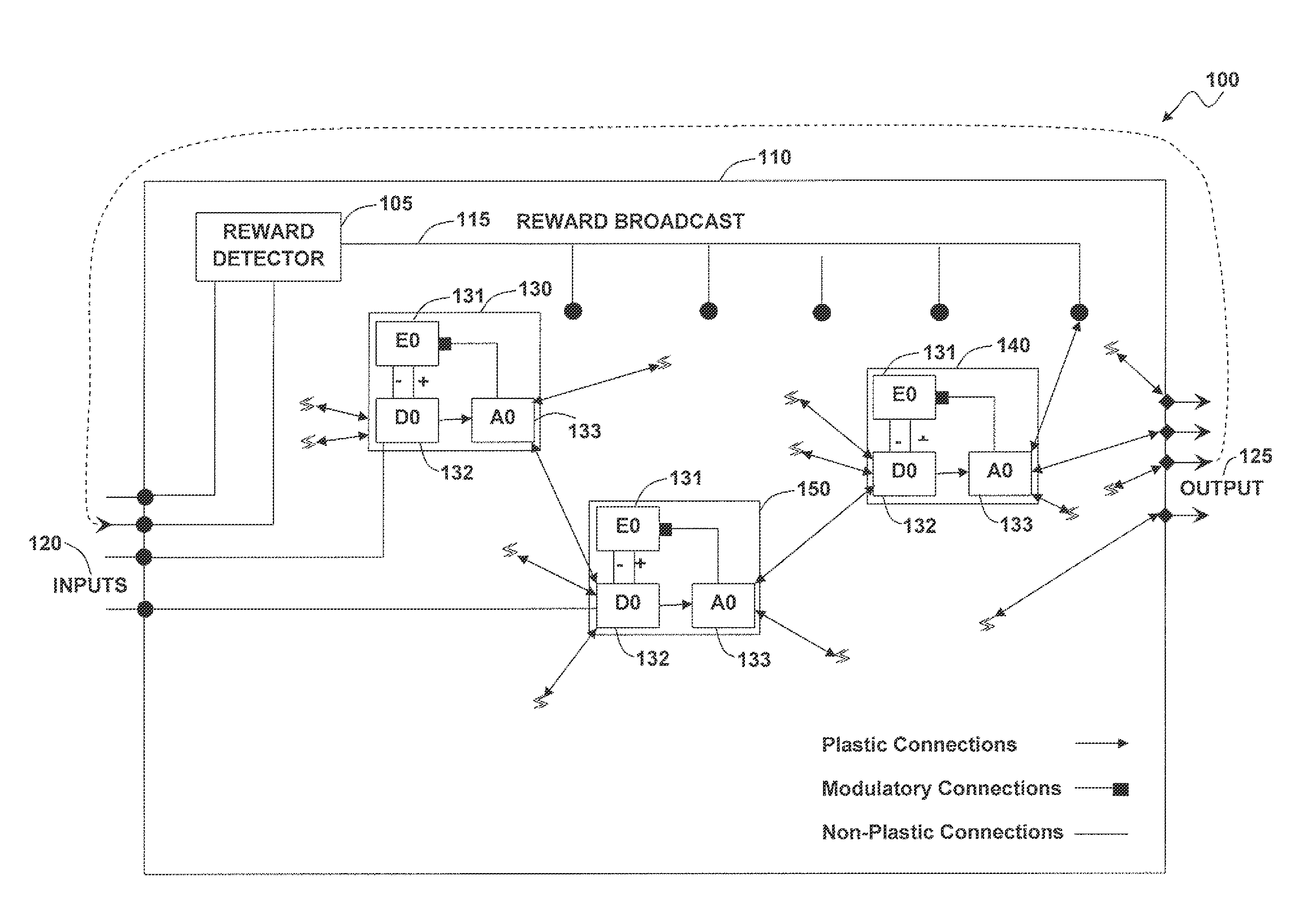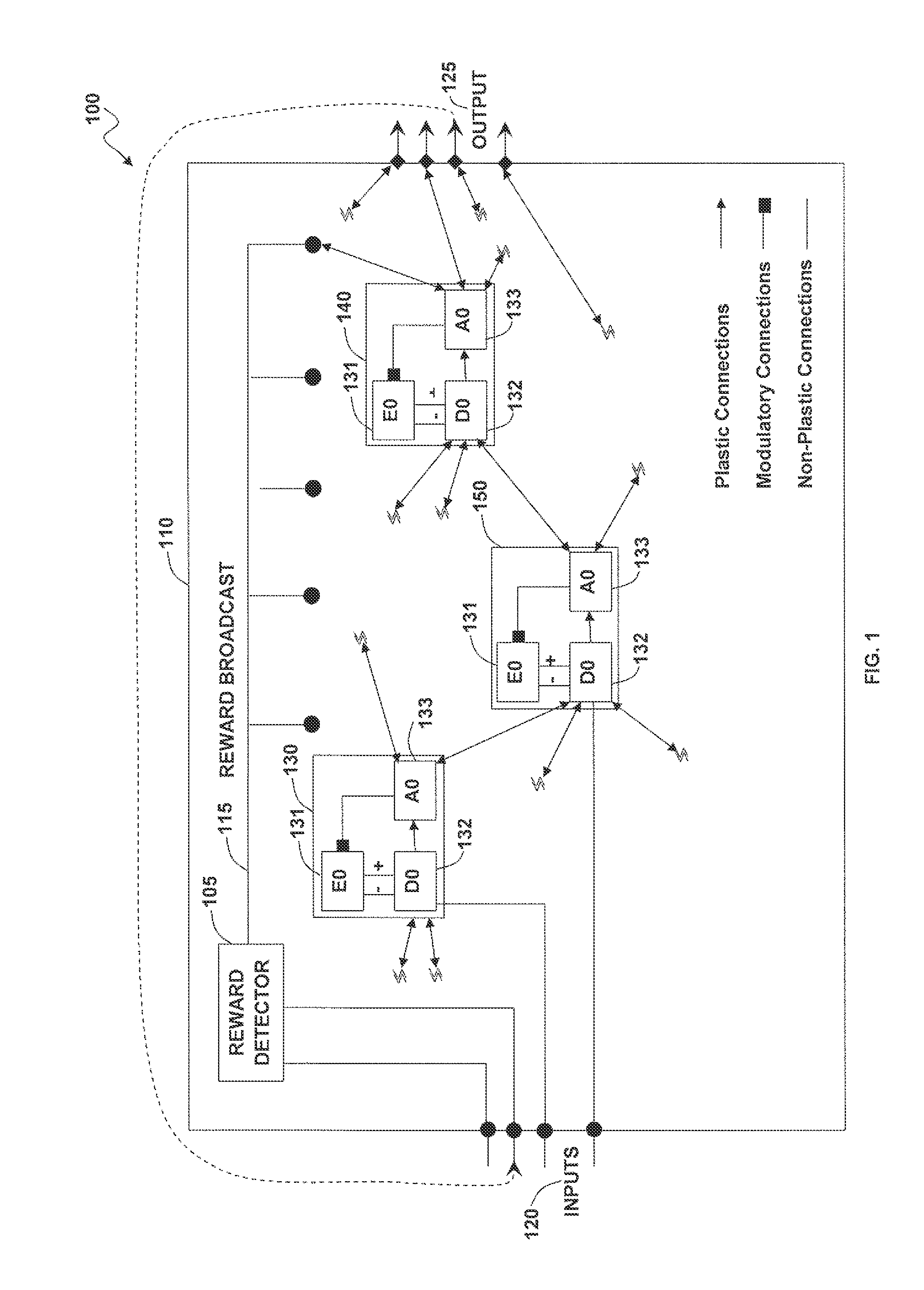Self-organizing circuits
a self-organizing circuit and circuit technology, applied in the field of self-organizing circuits, can solve the problems of inability to deal with imperfection, inability to realize the self-organization of nature, and the inability to solve problems such as the inability to solve imperfection, etc., and achieve the effect of avoiding the cycle of current paradigms and avoiding the cycle of self-organization
- Summary
- Abstract
- Description
- Claims
- Application Information
AI Technical Summary
Benefits of technology
Problems solved by technology
Method used
Image
Examples
Embodiment Construction
[0035]The particular values and configurations discussed in these non-limiting examples can be varied and are cited merely to illustrate at least one embodiment and are not intended to limit the scope thereof.
[0036]FIG. 1 illustrates a schematic diagram of self-organizing circuit fabric 100, in accordance with the disclosed embodiments. Sensor inputs 120 are mapped to a number of circuit modules 130, 140 and 150 embedded in the fabric 100. A portion of the inputs 120 are mapped to a reward detector 105, which generates a reward signal 115 when it detects specific regularities in the input data stream, for example the smile of a human. The reward signal 115 is duplicated and broadcast throughout the fabric 100. Each circuit modules 130, 140 and 150 contain a dendritic unit 132 an axonal unit 133 and an energy unit 131. The dendritic unit 132 is composed of volatile functional memory. In other words, the volatile memory configures a functional state.
[0037]Energy needed for the repair ...
PUM
 Login to View More
Login to View More Abstract
Description
Claims
Application Information
 Login to View More
Login to View More - R&D
- Intellectual Property
- Life Sciences
- Materials
- Tech Scout
- Unparalleled Data Quality
- Higher Quality Content
- 60% Fewer Hallucinations
Browse by: Latest US Patents, China's latest patents, Technical Efficacy Thesaurus, Application Domain, Technology Topic, Popular Technical Reports.
© 2025 PatSnap. All rights reserved.Legal|Privacy policy|Modern Slavery Act Transparency Statement|Sitemap|About US| Contact US: help@patsnap.com



